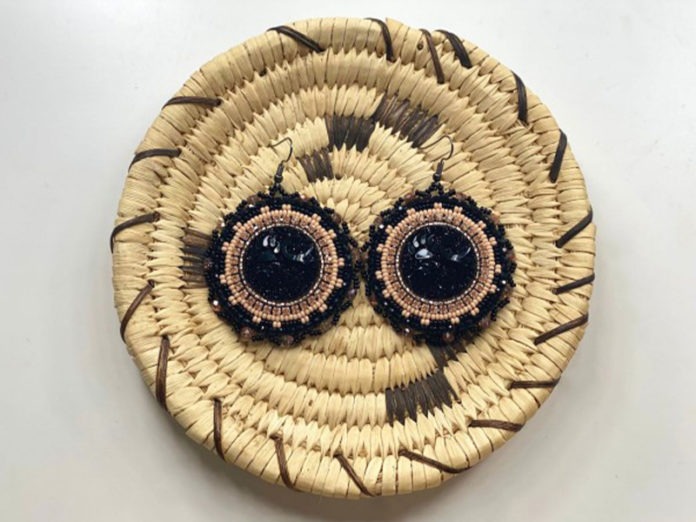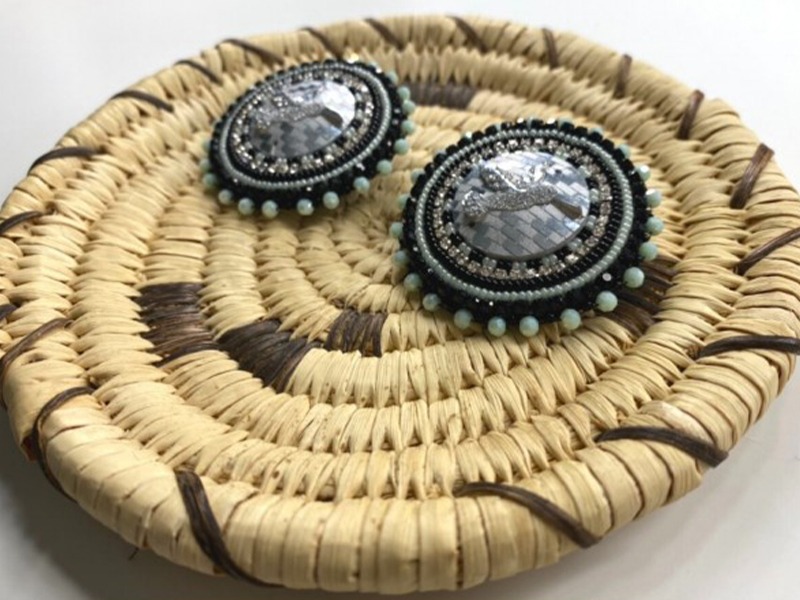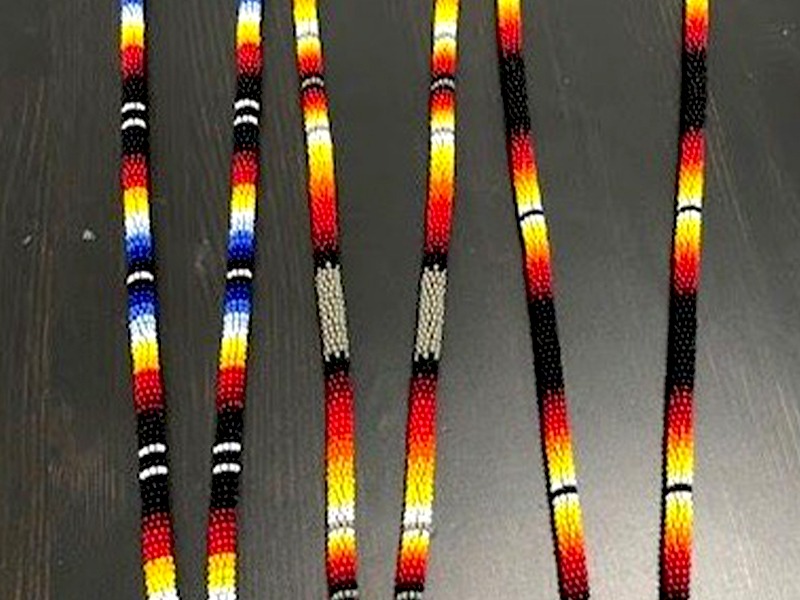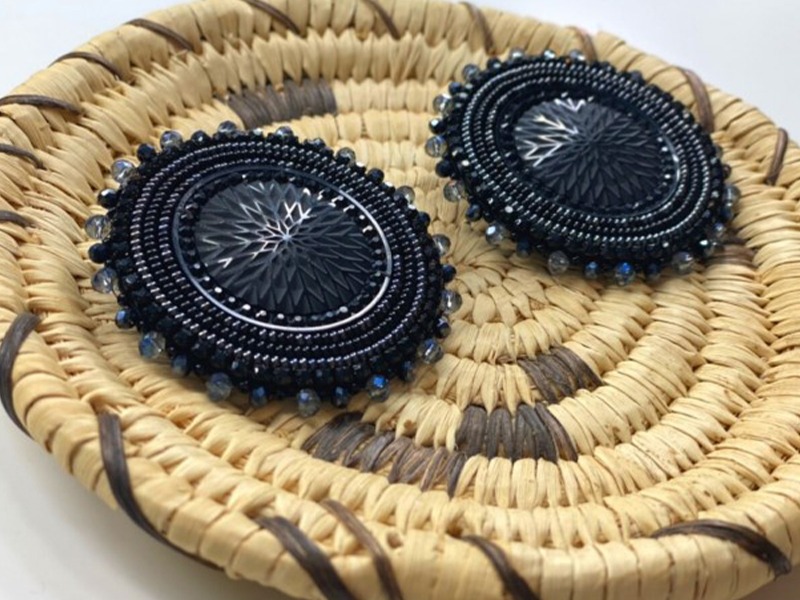
Lexi Lopez started a beadworking business with her mother Kathy and grandmother Sherry in 2015. Her younger sister, Jazmyne, beads as well. Lopezbeading was launched when Lopez, now 21, was in boarding school at Sherman Indian High School in Riverside.
She learned how to bead at the age of 15 when she took a beading class as one of her electives. Once she started to bead, she would teach the rest of her family what she learned when she went home on weekends.
“I wanted to earn some extra money because I was always breaking my phone and I could use the money I made from beading to fix my phone screen,” said Lexi Lopez, who specializes in wrap lanyards, wristlets and zipper pulls. “I put on 40 to 50 beads at a time and ‘wrap’ it around the paracord.”
She said the largest order fulfilled by lopezbeading so far was making 15 lanyards for Soboba Tribal TANF.
“My mother (Kathy Lopez) can do it all,” Lexi Lopez said. “She beads earrings using the two-needle method and she can bead lanyards and wristlets using the wrap and peyote stitch method. She can also make long hanging earrings.”

Peyote stitch is a bead weaving technique used to create beaded pieces without a loom (off-loom beadweaving). Using a beading needle and thread, beads are woven together is a zig-zag fashion. By zig-zagging the thread through offset rows of beads, any size or shape can be created. The offset alignment achieved with peyote stitches give texture and interest to beaded jewelry and accessories. It’s a great style to use for bracelets, necklaces and small bags or amulets.
The name peyote comes from early Native American rituals. An early form of the stitch was used to create beaded objects for use in religious ceremonies that included the use of the peyote cactus. Although modern peyote stitch is different from the techniques used by early Native Americans and African artists, the name has remained.
“My sister, Jazmyne Lopez, makes earrings using a basic beaded applique method where you put five beads down and tack down three; she also can peyote stitch,” Lexi Lopez said. “My grandmother, Sherry Lopez, sews and is currently working on sewing kitchen sets.”
The process to fill a typical order is asking the client for the colors, length and quantity of the items they want. Once work has begun on an order, it generally takes about three to six weeks to complete depending on several factors such as the size of the order and how many orders lopezbeading is working on at the time.

Photos courtesy of the Soboba Band of Luiseño Indians 
Photos courtesy of the Soboba Band of Luiseño Indians
“What I think we all enjoy about doing this type of work is people recognizing our brand. Recognition is a rewarding feeling for all the hard work we put into each item we create,” Lexi Lopez said. “Our three arrows logo represents me, my mom and grandma.”
While many small businesses have been adversely affected by the coronavirus pandemic, lopezbeading has found a positive aspect to it.
“It has pushed us to work harder and put more time and effort into making our business the best it can be,” Lexi Lopez said.
Information, www.lopezbeading.com
Soboba Band of Luiseño Indians • Contributed
Find your latest news here at the Hemet & San Jacinto Chronicle
